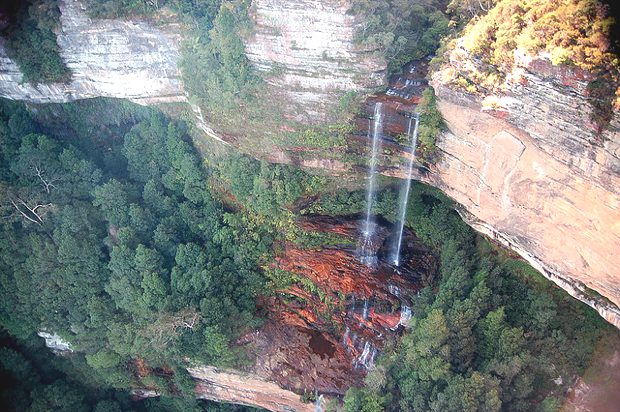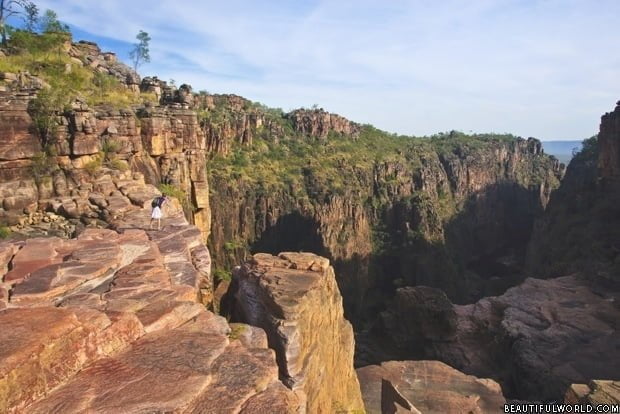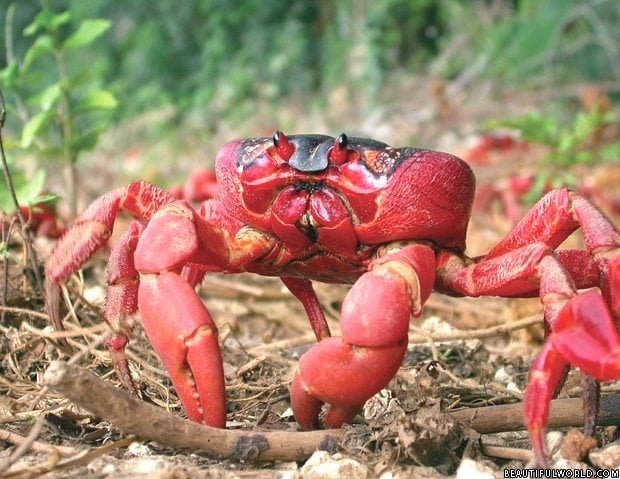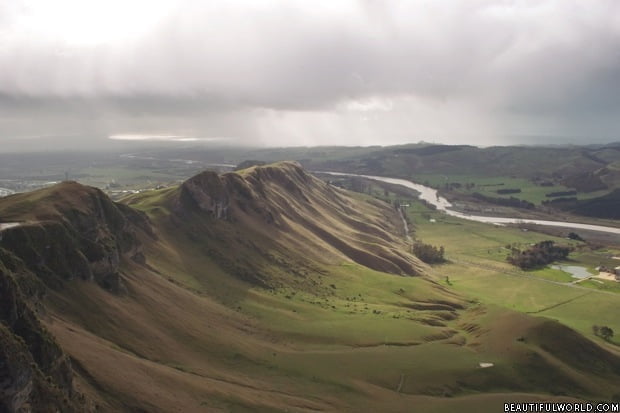It sometimes seems that the world is getting smaller with advancements in transport and communications putting previously inaccessible places firmly on the tourist map. However, for the more adventurous traveller, there remains a desire to seek out a truly exciting destination far removed from the all-inclusive luxury pampering on offer from many tour operators.
It would be easy to believe that remote islands with active volcanoes and indigenous tribes with a history of cannibalism can now only be found in the pages of fiction but this is far from true. The South Pacific island nation of Vanuatu is now easily accessible but in many ways it is in a completely different world.
Vanuatu Map
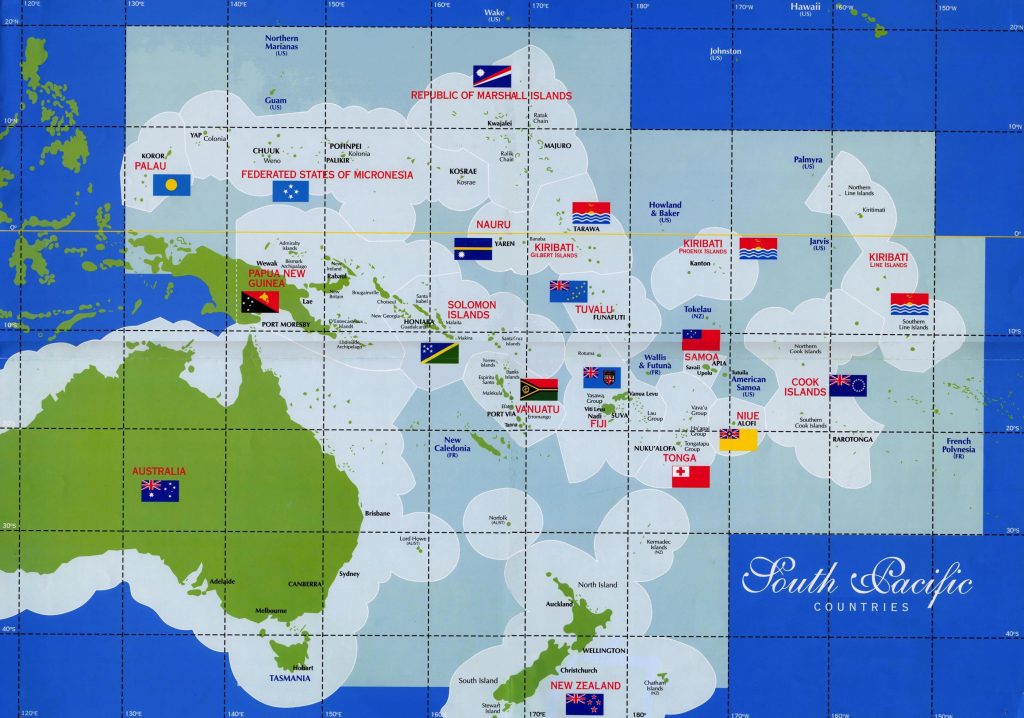

The islands lie 1,750 km east of northern Australia spanning latitudes of 13 to 21 degrees south and longitude of 166 to 171 degrees east. There are around 83 islands, 65 of which are inhabited.
This string of volcanic islands forms an archipelago running for around 1,300 km from north to south, see left.
It is only when looking at a map of Vanuatu that the widespread nature of this nation can be truly appreciated. There are regular excursions between the islands both by sea and air but considerable distances can be involved. All of Vanuatu is accessible but just how much a visitor can see is likely to be limited by time and cost.
Vanuatu History
Little is known about the ancient history of these islands but archaeological evidence indicates that they have been inhabited for thousands of years with the indigenous population being the Melanesian people. The islands were discovered by the outside world in 1606 by the Portuguese/Spanish alliance who established a short-lived settlement on the largest island and called the islands “La Austrialia del Espiritu Santo” or The Southern Land of the Holy Spirit. This name has survived and this island is now simply known as “Espiritu Santo”.
The islands were rediscovered later in the 18th century when Captain Cook named them the New Hebrides presumably in comparison with the well-known Scottish islands. The 19th century saw the arrival of Christian missionaries intent on providing spiritual succour and food for thought but some ended up fulfilling a rather more basic need for their cannibal converts.
Today Vanuatu is a predominantly Christian nation. European settlers arrived, mainly French and British (from Australia), often looking to establish profitable plantations and by 1880 both France and the UK claimed sovereignty over parts of this island group. In a rare example of cooperation between these two colonial nations, it was agreed that the islands should be governed jointly and in 1906 an agreement known as The Anglo-French Condominium was made to govern The New Hebrides.

The Second World War saw an American presence in the islands and the local population became aware of the technology, goods and wealth which had previously been unknown to them. This led to a birth of nationalism calling for independence and the appearance of various “cargo cults”. This hard to understand phenomenon was based on the belief that the various goods being delivered to the islands were gifts from the gods and the recipients were simply being rewarded for their activities such as marching, building airstrips and using radios. The cult members would then go on to mimic these activities expecting to also be rewarded. On the Island of Tanna, some of the best known cargo cults were formed. They were usually based around a specific person and the Tom Navy and John Frum cults were well known. John Frum is still recognised not only as a religion but also as a political party.
One tribal legend on Tanna concerned a fair-skinned islander who left and would return when he had married a powerful bride. Needless to say, when Prince Philip and his bride Her Majesty Queen Elizabeth visited the islands he was seen to match this description perfectly and was regarded as a returning hero and even to this day there is a movement where he is worshipped as a god. The independence movement gained pace in the 1970s and in 1980 The Republic of Vanuatu was established.
Vanuatu Flag

The birth of a new nation allowed for a new national flag and it is full of symbolism. The main feature of the flag is a black horizontal “Y” shape representing the shape of the island group. The left section of the flag forming the triangle at the top of the “Y” is black referring to the black Melanesian people. The lower part of the flag is green showing the fertility of the land with the upper red part referring to the bloodshed in the fight for independence. The yellow “Y” within the black is said to represent either sunshine or the spreading of the light of the religious gospel throughout the islands. There is also a golden boar’s tusk which is a frequently worn pendant said to bring wealth and good luck. There are also two fern fronds said to represent peace their 39 leaflets matching the 39 Members of the Vanuatu Parliament. By comparison the earlier flag of the Anglo-French Condominium was a very plain affair consisting of two crossed flags one being the French tricolour and the other being the UK Union flag. For some inexplicable reason, all online illustrations of this flag show the Union flag as being upside down!
Vanuatu Volcanoes
Vanuatu is located along the western side of the so-called Pacific “Ring of Fire” and this country is very volcanically active. There are no fewer than nine currently active volcanoes in Vanuatu with seven being on land and a further two being under the sea. No trip to Vanuatu would be complete without a visit to a volcano. The most frequently visited is Mount Yasur on the island of Tanna. This is not only an incredibly spectacular volcano but it is also regarded as being the world’s most accessible active volcano. There are regular tours to Yasur and these involve a rather exciting 4×4 trip along unmade tracks and it is possible to drive right up to the base of the volcano. A guide will then lead visitors along a path to the summit, a trek that only takes about 15 minutes. From a relatively safe viewpoint it is possible to see into the volcano, experience the heat, smell and sounds of this miracle of nature and feel the rumbling of the ground. There are frequent explosions with showers of flying rocks.

There are many other volcanoes to visit including Mount Lopevi which is regarded as being the most perfect volcano rising straight out of the sea. It has been erupting since 2007. Mount Ambrym frequently has spectacular lava lakes. Mount Manaro on Ambrae Island has been erupting since 2005 and perhaps the most dangerous of all is Mount Garet on Gaua Island which is considered to be highly active and last erupted in 2010. This is ranked as one of the world’s most dangerous volcanoes which could result in major loss of life and tsunamis.
Vanuatu Weather
The islands forming Vanuatu are spread out across various different latitudes but all lie within the tropics and it will come as no surprise to learn that the weather throughout the island group features plenty of sunshine, warm or hot temperatures and considerable rainfall.
The northern islands feature an equatorial climate with very little change throughout the year. High temperatures and plenty of rain can be expected but it must be said that rainfall tends to come as short-lived torrential downpours which can be quite refreshing. The months between July and September are slightly cooler and drier and are regarded as the best time to visit.

The central and southernmost islands have climates described as “tropical” and “sub-tropical” and there is rather more seasonal variation in weather patterns. Rather than considering the traditional four seasons, Vanuatu weather is better divided into a “green” season from November to April being hot, wet and humid and a “dry” season from May to October with lower temperatures and less rain.
The average summer Vanuatu temperatures are around 28 degrees Celsius dropping to 23 degrees in the cooler months. The Trade Winds also have a moderating effect on both temperatures and levels of humidity. Tropical storms and cyclones are not uncommon with November to April being regarded as the cyclone season but fierce storms are possible at any time of the year. May to October is often considered to be the best time to visit. It should also not be forgotten that, in addition to potentially damaging extreme weather, there is also a constant threat of earthquakes, tsunamis and volcanic eruptions. This is an exciting place!
How Do I Get to Vanuatu?
For centuries Vanuatu has been a remote inaccessible place but it is now a popular stopping-off point for cruise ships. Port Vila is the most commonly visited destination and in most cases passengers will need to be brought ashore by tenders. Some cruise operators also visit the tiny uninhabited Mystery Island, the location of the Aneityum Airport (landing strip) which is located at the southern end of the archipelago.

Most visitors however will arrive by air from Australia and this involves a 4 hour flight from the east coast. This is now easy and affordable and direct flights are available from Brisbane, Sydney and Melbourne with Virgin Australia and Air Vanuatu. The latter also offers direct flights from Brisbane to Espiritu Santo. For visitors arriving in Port Vila on the island of Efate, internal flights are available to the other islands with the flight to Espiritu Santo taking 50 minutes and Tanna 40 minutes.
What is the Currency of Vanuatu?
The currency of Vanuatu is the Vanuatu Vatu. Some travel advisers state that Australian Dollars are also widely accepted but this is generally not the case and local currency will be required. Currency exchange is best carried out in Port Vila with good exchange rates and no excessive fees being charged. Goodies on the Port Vila main street is often recommended but other equally competitive currency exchangers can easily be found.
What Language is Spoken in Vanuatu?
Vanuatu has three official languages these being English, French and bislama which is an English based creole language. Of these, English and French are widely used in education and official business and both are widely understood but bislama is the most commonly spoken language for everyday use. In addition, Vanuatu also has an amazing number of local languages, approximately 100 being known to be in regular use. This is even more surprising considering that this nation has a population of around 270,000.
What to Do in Vanuatu

In any visit to an island Paradise, the sea and beaches are likely to be a major attraction and Vanuatu does have some of the world’s most beautiful beaches with Champagne beach regularly appearing in the best beaches lists. For those interested in snorkelling or scuba diving there are some incredible reefs and wrecks to be explored including the wreck of the SS President Coolidge which sank during the Second World War off Spiritu Santo and is considered to be the world’s best wreck. There are many other wrecks to be explored along with the remarkable Million Dollar Point where the US military dumped millions of dollars worth of military kit into the ocean. Above the surface surfing, swimming and boating are popular. Seaplane and helicopter flights are also available. An evening visit to one of the many kava bars is also unmissable. Kava is a highly prized local drink best described as being “herbal”.
The islands have so many natural wonders such as caves and swimming pools that it is impossible to see everything. The Vanuatu people are rightly proud of their unique culture and many events and ceremonies go back for hundreds of years but are still practised today such as the death-defying dives performed on the island of Pentecost where young men throw themselves off a tall tower with only vines tied around their ankles to prevent certain death. It is widely acknowledged that this is the inspiration for modern bungee jumping.

A visit to one of the traditional villages such as Yakel on the island of Tanna, shows an ancient way of life which has been preserved more or less unchanged. Shows are put on for the visitors but the traditional displays are completely authentic. The old ways are still very much alive and local people enjoy explaining to visitors that they still know all about cannibalism. They often explain that the cooking time for a human being is 3 to 5 hours! Of course cannibalism is now a thing of the past but the practice continued well into the 20th century with the last known case being as recently as 1969.
What really makes Vanuatu so special are its people who are incredibly welcoming and happy. Indeed these islands have been named as some of the happiest places on Earth.

Our thanks to David Kirkland for the use of his photographs.




